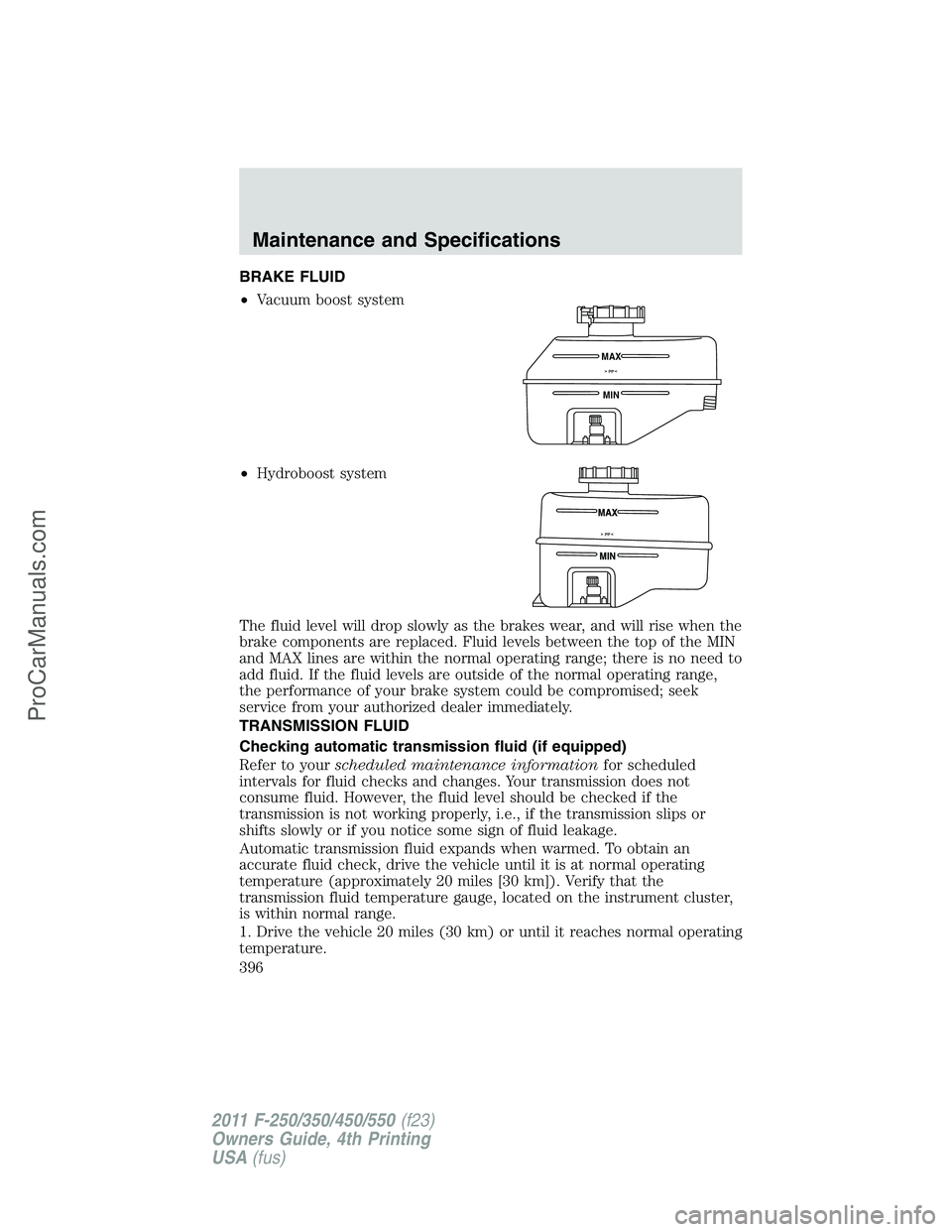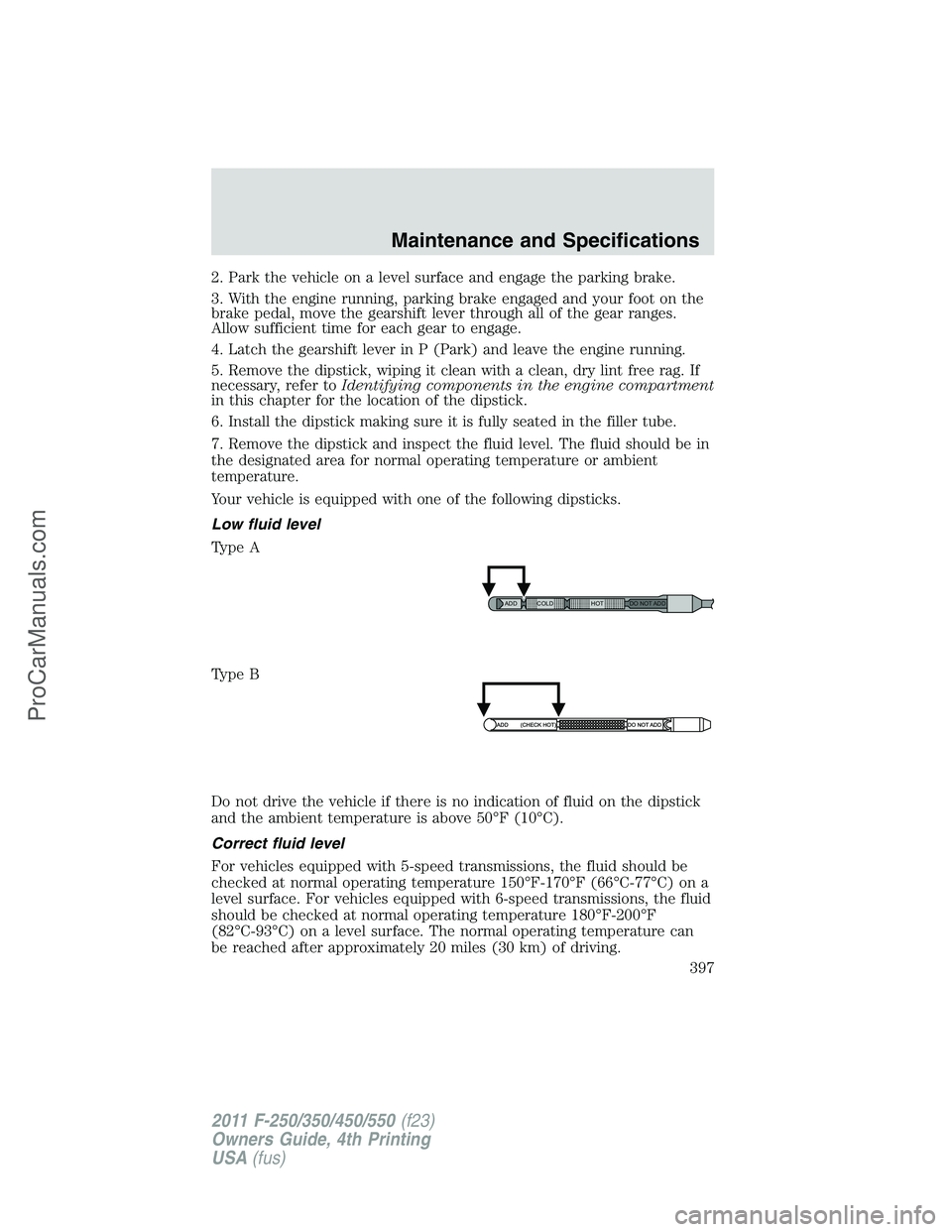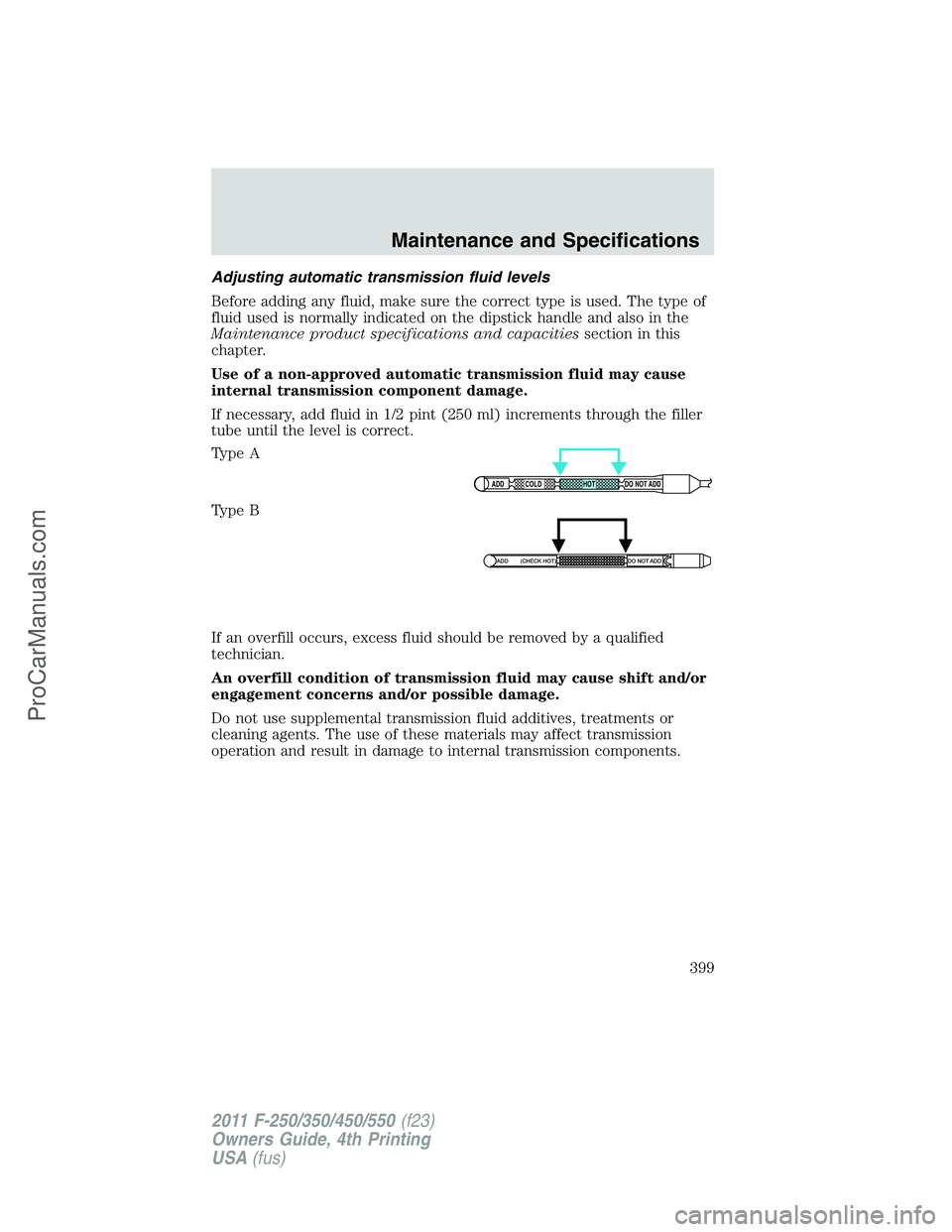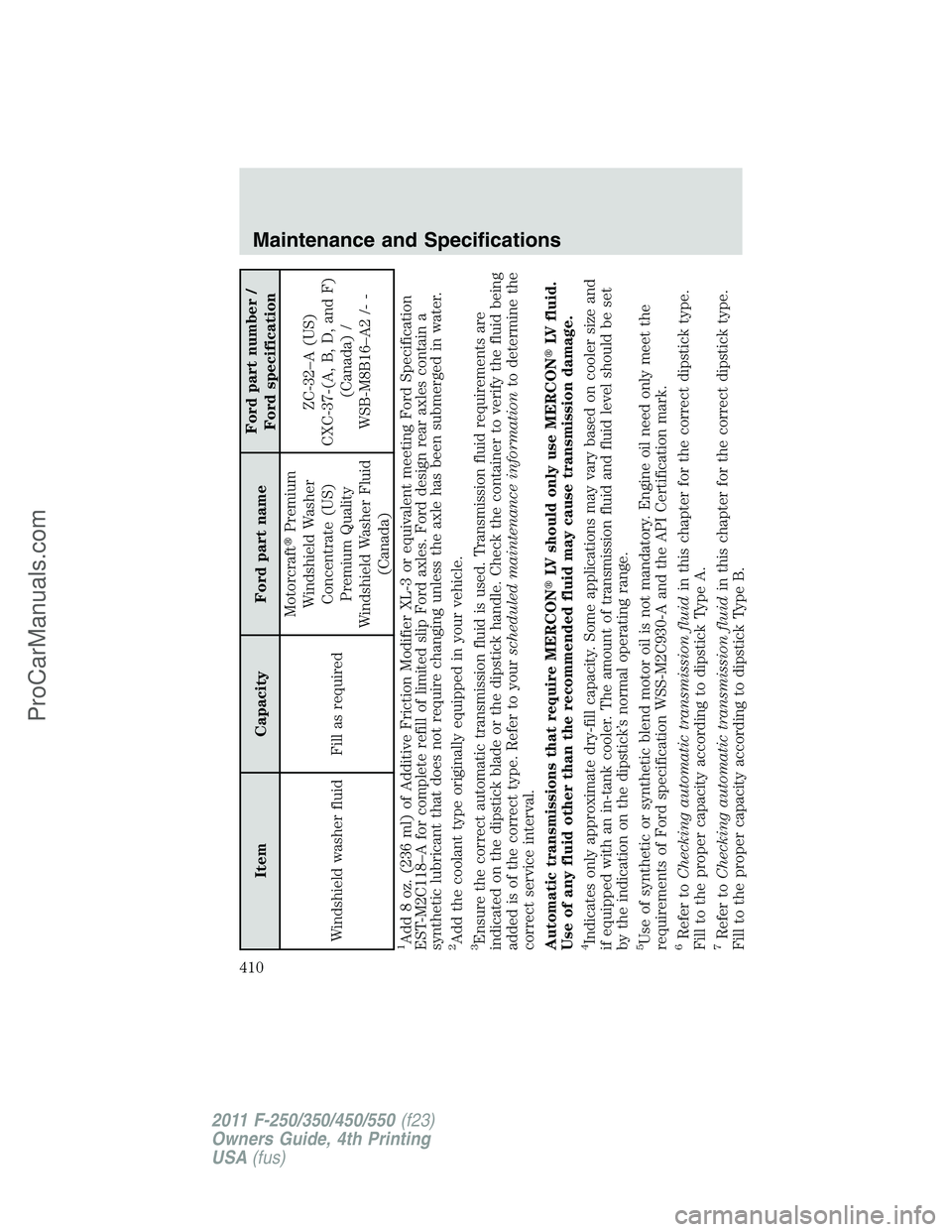Page 394 of 449

Readiness for Inspection/Maintenance (I/M) testing
Some state/provincial and local governments may have
Inspection/Maintenance (I/M) programs to inspect the emission control
equipment on your vehicle. Failure to pass this inspection could prevent
you from getting a vehicle registration. Your vehicle may not pass the I/M
test if the service engine soon
indicator is on or not working
properly (bulb is burned out), or if the OBD-II system has determined
that some of the emission control systems have not been properly
checked. In this case, the vehicle is considered not ready for I/M testing.
If the service engine soon
indicator is on or the bulb does not
work, the vehicle may need to be serviced. Refer toOn-board
diagnostics (OBD-II)in this chapter.
If the vehicle’s engine or transmission has just been serviced, or the
battery has recently run down or been replaced, the OBD-II system may
indicate that the vehicle is not ready for I/M testing. To determine if the
vehicle is ready for I/M testing, turn the ignition key to the on position
for 15 seconds without cranking the engine. If the service engine
soon
indicator blinks eight times, it means that the vehicle is not
ready for I/M testing; if the service engine soon
indicator stays on
solid, it means that the vehicle is ready for I/M testing.
The OBD-II system is designed to check the emission control system
during normal driving. A complete check may take several days. If the
vehicle is not ready for I/M testing, the following driving cycle consisting
of mixed city and highway driving may be performed:
15 minutes of steady driving on an expressway/highway followed by
20 minutes of stop-and-go driving with at least four 30-second idle
periods.
Allow the vehicle to sit for at least eight hours without starting the
engine. Then, start the engine and complete the above driving cycle. The
engine must warm up to its normal operating temperature. Once started,
do not turn off the engine until the above driving cycle is complete. If
the vehicle is still not ready for I/M testing, the above driving cycle will
have to be repeated.
Maintenance and Specifications
394
2011 F-250/350/450/550(f23)
Owners Guide, 4th Printing
USA(fus)
ProCarManuals.com
Page 396 of 449

BRAKE FLUID
•Vacuum boost system
•Hydroboost system
The fluid level will drop slowly as the brakes wear, and will rise when the
brake components are replaced. Fluid levels between the top of the MIN
and MAX lines are within the normal operating range; there is no need to
add fluid. If the fluid levels are outside of the normal operating range,
the performance of your brake system could be compromised; seek
service from your authorized dealer immediately.
TRANSMISSION FLUID
Checking automatic transmission fluid (if equipped)
Refer to yourscheduled maintenance informationfor scheduled
intervals for fluid checks and changes. Your transmission does not
consume fluid. However, the fluid level should be checked if the
transmission is not working properly, i.e., if the transmission slips or
shifts slowly or if you notice some sign of fluid leakage.
Automatic transmission fluid expands when warmed. To obtain an
accurate fluid check, drive the vehicle until it is at normal operating
temperature (approximately 20 miles [30 km]). Verify that the
transmission fluid temperature gauge, located on the instrument cluster,
is within normal range.
1. Drive the vehicle 20 miles (30 km) or until it reaches normal operating
temperature.
MIN MAX
Maintenance and Specifications
396
2011 F-250/350/450/550(f23)
Owners Guide, 4th Printing
USA(fus)
ProCarManuals.com
Page 397 of 449

2. Park the vehicle on a level surface and engage the parking brake.
3. With the engine running, parking brake engaged and your foot on the
brake pedal, move the gearshift lever through all of the gear ranges.
Allow sufficient time for each gear to engage.
4. Latch the gearshift lever in P (Park) and leave the engine running.
5. Remove the dipstick, wiping it clean with a clean, dry lint free rag. If
necessary, refer toIdentifying components in the engine compartment
in this chapter for the location of the dipstick.
6. Install the dipstick making sure it is fully seated in the filler tube.
7. Remove the dipstick and inspect the fluid level. The fluid should be in
the designated area for normal operating temperature or ambient
temperature.
Your vehicle is equipped with one of the following dipsticks.
Low fluid level
Type A
Type B
Do not drive the vehicle if there is no indication of fluid on the dipstick
and the ambient temperature is above 50°F (10°C).
Correct fluid level
For vehicles equipped with 5-speed transmissions, the fluid should be
checked at normal operating temperature 150°F-170°F (66°C-77°C) on a
level surface. For vehicles equipped with 6-speed transmissions, the fluid
should be checked at normal operating temperature 180°F-200°F
(82°C-93°C) on a level surface. The normal operating temperature can
be reached after approximately 20 miles (30 km) of driving.
ADD COLD HOT DO NOT ADD
Maintenance and Specifications
397
2011 F-250/350/450/550(f23)
Owners Guide, 4th Printing
USA(fus)
ProCarManuals.com
Page 398 of 449
Type A
Type B
For vehicles equipped with 5-speed transmissions, the transmission fluid
should be in this range if at normal operating temperature (150°F-170°F
[66°C-77°C]). For vehicles equipped with 6-speed transmissions, the
transmission fluid should be in this range if at normal operating
temperature (180°F-200°F [82°C-93°C]).
High fluid level
Type A
Type B
Fluid levels above the safe range may result in transmission failure. An
overfill condition of transmission fluid may cause shift and/or
engagement concerns and/or possible damage.
High fluid levels can be caused by an overheating condition.
ADD COLD HOT DO NOT ADD
ADD COLD HOT DO NOT ADD
Maintenance and Specifications
398
2011 F-250/350/450/550(f23)
Owners Guide, 4th Printing
USA(fus)
ProCarManuals.com
Page 399 of 449

Adjusting automatic transmission fluid levels
Before adding any fluid, make sure the correct type is used. The type of
fluid used is normally indicated on the dipstick handle and also in the
Maintenance product specifications and capacitiessection in this
chapter.
Use of a non-approved automatic transmission fluid may cause
internal transmission component damage.
If necessary, add fluid in 1/2 pint (250 ml) increments through the filler
tube until the level is correct.
Type A
Type B
If an overfill occurs, excess fluid should be removed by a qualified
technician.
An overfill condition of transmission fluid may cause shift and/or
engagement concerns and/or possible damage.
Do not use supplemental transmission fluid additives, treatments or
cleaning agents. The use of these materials may affect transmission
operation and result in damage to internal transmission components.
ADD COLD HOT DO NOT ADD
Maintenance and Specifications
399
2011 F-250/350/450/550(f23)
Owners Guide, 4th Printing
USA(fus)
ProCarManuals.com
Page 409 of 449
Item Capacity Ford part nameFord part number /
Ford specification
Hinges, latches, striker
plates, fuel filler door
hinge and seat tracks— Multi-Purpose GreaseXG–4 or XL-5 /
ESB-M1C93–B
Lock cylinders —Motorcraft�Penetrating
and Lock LubricantXL-1 / None
Transmission / parking
brake linkages and
pivots, brake pedal shift—Motorcraft�Premium
Long-Life GreaseXG-1-C or XG-1-K /
WSD-M1C227-A
Power steering fluidKeep fluid level
between MIN and
MAX on reservoirMotorcraft�
MERCON�VATFXT-5-QM /
MERCON�V
Transfer case fluid 2.0 quarts (1.9L)Motorcraft�Transfer
Case FluidXL-12 / —
Automatic transmission
fluid
(5–speed)
3
17.5 quarts
(16.6L)
4
Motorcraft�
MERCON�LV AT FXT-10–QLV /
MERCON�LV
Automatic transmission
fluid
(6-speed)
3
18.5 quarts
(17.5L)
4, 6
16.7 quarts
(15.8L)
4, 7
Maintenance and Specifications
409
2011 F-250/350/450/550(f23)
Owners Guide, 4th Printing
USA(fus)
ProCarManuals.com
Page 410 of 449

Item Capacity Ford part nameFord part number /
Ford specification
Windshield washer fluid Fill as requiredMotorcraft�Premium
Windshield Washer
Concentrate (US)
Premium Quality
Windshield Washer Fluid
(Canada)ZC-32–A (US)
CXC-37-(A, B, D, and F)
(Canada) /
WSB-M8B16–A2 /- -
1Add 8 oz. (236 ml) of Additive Friction Modifier XL-3 or equivalent meeting Ford Specification
EST-M2C118–A for complete refill of limited slip Ford axles. Ford design rear axles contain a
synthetic lubricant that does not require changing unless the axle has been submerged in water.2Add the coolant type originally equipped in your vehicle.3Ensure the correct automatic transmission fluid is used. Transmission fluid requirements are
indicated on the dipstick blade or the dipstick handle. Check the container to verify the fluid being
added is of the correct type. Refer to yourscheduled maintenance informationto determine the
correct service interval.
Automatic transmissions that require MERCON�LV should only use MERCON�LV fluid.
Use of any fluid other than the recommended fluid may cause transmission damage.4Indicates only approximate dry-fill capacity. Some applications may vary based on cooler size and
if equipped with an in-tank cooler. The amount of transmission fluid and fluid level should be set
by the indication on the dipstick’s normal operating range.5Use of synthetic or synthetic blend motor oil is not mandatory. Engine oil need only meet the
requirements of Ford specification WSS-M2C930-A and the API Certification mark.6Refer toChecking automatic transmission fluidin this chapter for the correct dipstick type.
Fill to the proper capacity according to dipstick Type A.7Refer toChecking automatic transmission fluidin this chapter for the correct dipstick type.
Fill to the proper capacity according to dipstick Type B.
Maintenance and Specifications
410
2011 F-250/350/450/550(f23)
Owners Guide, 4th Printing
USA(fus)
ProCarManuals.com
Page 414 of 449
TRANSMISSION CODE DESIGNATIONS
You can find a transmission code on
the Safety Compliance Certification
Label. The following table tells you
which transmission each code
represents.
Description Code
Five-speed automatic (5R110W) T
Six-speed automatic (6R140) P
Maintenance and Specifications
414
2011 F-250/350/450/550(f23)
Owners Guide, 4th Printing
USA(fus)
ProCarManuals.com